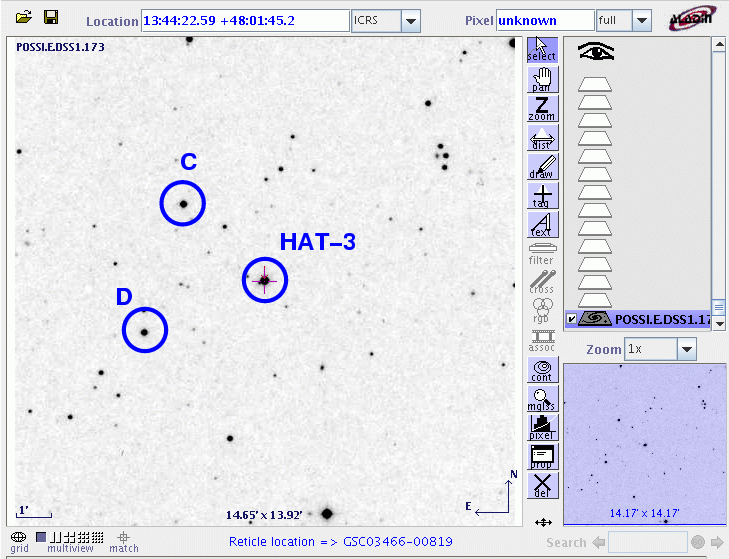
On the night of UT Mar 12, 2008, the SDSS Photometric Telescope ("PT" for short) took a series of exposures of HAT-3. We saw a full transit under so-so conditions, at times roughly predicted by the ephemeris.
Notes from the night
This is a chart of the field. HAT-3 is the bright star indicated by the crosshairs. The labelled stars will appear in later analysis.

The host star of HAT-3 has a magnitude V=11.59 according to HAT-P-3b: A Heavy-Element-rich Planet Transiting a K Dwarf Star.
Following the procedures outlined by Kent Honeycutt's article on inhomogeneous ensemble photometry, I used all stars available in each image to define a reference frame, and measured each star against this frame. You can find the software package used to do the ensemble photometry online; it's free!
The night suffered from two or three short periods of cloud. The graph below shows the amount by which instrumental magnitudes from each image needed to be shifted to match the ensemble reference. On a clear night, this graph would show a straight horizontal line.
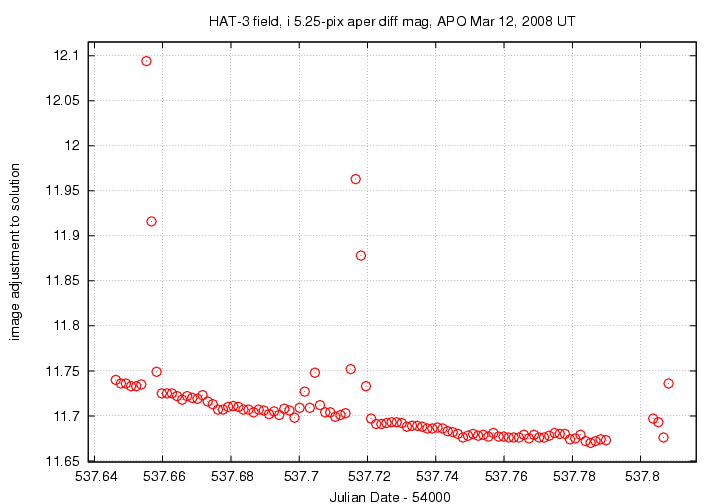
Below is a graph of the scatter in differential magnitude versus magnitude in the ensemble solution.
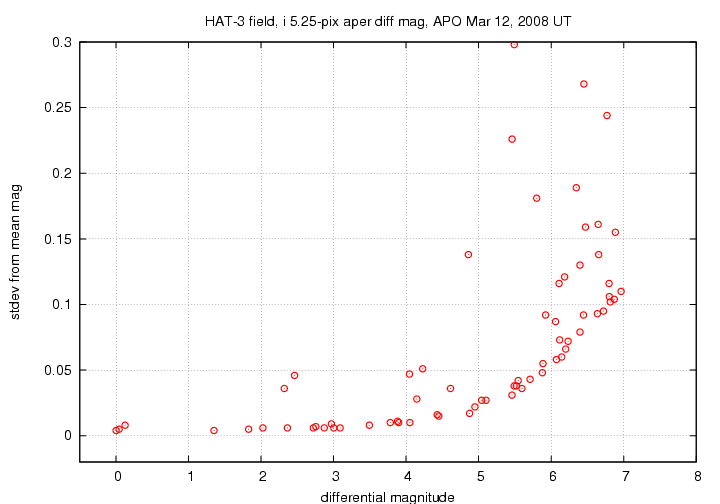
HAT-3 is the star near differential mag 0.1; it shows a small excess of scatter over neighboring stars of the same brightness. The "noise floor" in these measurements is about 0.004 mag -- mediocre for the PT.
Below are the light curves for the target (green symbols) and some comparison stars in the field. Stars "A" and "B" was near one edge of the field; they fell out of the field as the telescope drifted.
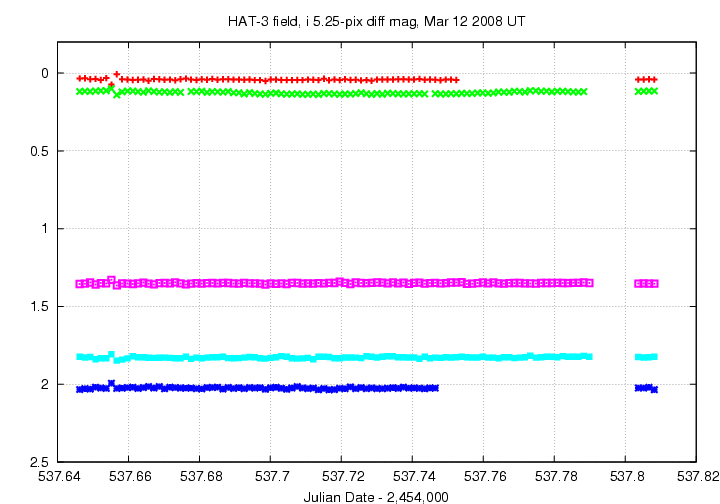
In this closeup, I have shifted the data for two comparison stars to move them closer in magnitude to the target.
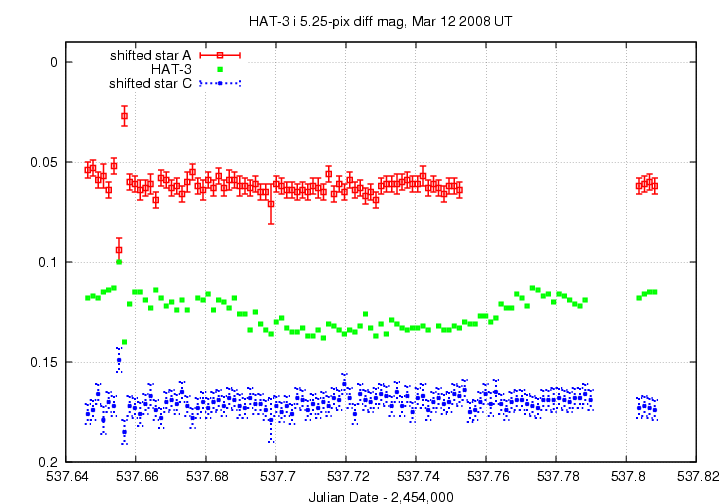
My eyeball estimates for the ingress and egress are ingress at about 537.69, egress at about 537.77.
An ephemeris grabbed from transitsearch.org predicts for this night
----------------------------------------------------------------------------------------
Begin Transit Window PREDICTED CENTRAL TRANSIT End Transit Window
All Times UT
HJD Year M D H M
2454537.67 2008 3 12 4 11 2454537.73 2008 3 12 5 26 2454537.78 2008 3 12 6 40
----------------------------------------------------------------------------------------
The ephemeris ingress of UT 2008 Mar 12 04:11:00 corresponds to JD 2,454,537.674, which is a bit earlier than I estimated. However, I see that there is a gentle dip starting at about this time, before the stronger drop which caught my eye. The ephemeris egress of UT 2008 Mar 12 06:40:00 corresponds to JD 2,454,537.778 agrees with my eye estimate.
You can grab the measurements for your own analysis. Below is a table with three flavors of time, plus the differential magnitude of the target and an estimate of the uncertainty in each measurement. I show the first few lines of the file to give you an idea of its format.
# Measurements of HAT-3 made with APO PT, Mar 12, 2008 UT. # Each exposure 45 seconds long in SDSS i-band; # Tabulated times are midexposure (FITS header time - half exposure length) # and accurate only to +/- 1 second (??). # 'mag' is a differential magnitude based on ensemble photometry # using a circular aperture of radius 5.25 arcseconds. # # UT day JD-2,450,000 HJD-2,450,000 mag uncert Mar12.64629 4537.64629 4537.64972 0.118 0.005 Mar12.64776 4537.64776 4537.65119 0.117 0.005 Mar12.64925 4537.64925 4537.65268 0.118 0.005
Last modified 03/22/2008 by MWR.